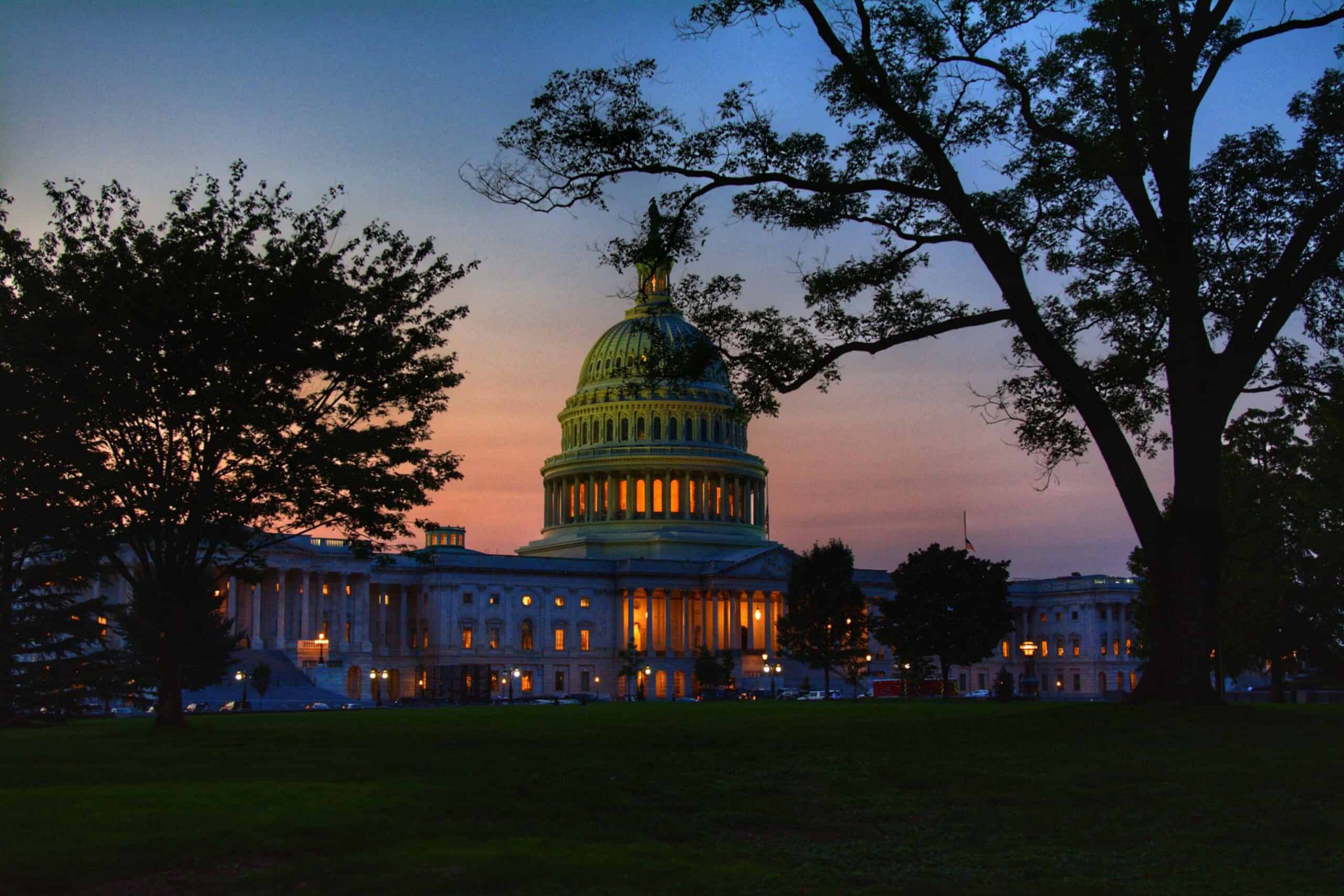
Kevin Vazquez is a staff attorney at the International Brotherhood of Teamsters. He graduated from Harvard Law School in 2023. The opinions he expresses on this blog are his own and should not be attributed to the IBT.
Democrats sealed control of the Senate on Saturday following Senator Catherine Cortez Mastro’s victory over Republican Challenger Adam Laxalt in Nevada. Democrats will retain 50 votes in the upper chamber, regardless of the outcome of the looming Georgia runoff between Senator Raphael Warnock and Republican challenger Herschel Walker. The outcome in Nevada is, no doubt, partially attributable to the herculean efforts of the Culinary Union Local 226, the largest labor union in the state, which has played a pivotal role in delivering electoral results for Democrats in recent years. The union endorsed the Democratic slate, and its members led rallies and knocked on thousands of doors—an average of 16,000 per day—to get out the vote for Democrats. As of today, control of the House remains contested, and both parties have a plausible path to the 218 votes necessary for a majority in the chamber. If the Democrats, against all odds, somehow manage to muscle a House majority, then much of the lagging Democratic agenda—including, critically, the PRO Act, which passed the House last year but failed to clear the Senate—could potentially be revived.
On Saturday, Bloomberg Law reported that the tentative agreement between unions and freight rail companies, reached with the help of the Biden administration in September, may not survive a vote by the SMART-Transportation Division this month, which could potentially prompt a strike. Senior union officials say that, either way, the margin is “razor thin” and that President Biden’s intervention has increased many workers’ frustration levels. SMART-TD, which represents almost a third of all workers covered by the tentative agreement, is slated to release its voting results on November 21, as is another large union, the Brotherhood of Locomotive Engineers and Trainmen. If the workers decide not to ratify the tentative agreement—which is certainly within the realm of possibility—then it could push the country toward a nationwide rail strike during the peak of the holiday shopping season, an outcome that President Biden and congressional Democrats are eager to avoid.
Bloomberg also reported yesterday that American’s Allied Pilots Association—the union representing American Airlines pilots—is considering a merger with the Air Lines Pilots Association, the union representing United Airlines and Delta Air Lines pilots, which would unite pilots at the three largest carriers in the country into one organization. On Friday, the board of American’s Allied Pilots Associations unanimously approved a plan to negotiate a possible combination with the Air Lines Pilots Association, already the largest pilot union in the world. This move arises during ongoing negotiations between the unions and the major airlines: pilots at both United and American each rejected proposed agreements recently, and Delta’s pilots approved a strike authorization vote late last month.
In other news, the Society for Human Resource Management (SHRM), a worldwide human resources membership association, published a paper on Saturday calling—perhaps surprisingly, considering the industry’s traditional orientation toward unions—for business leaders to “partner with unions to harness the potential of the workforce.” The paper, which is markedly pro-union, acknowledges organized labor’s growing strength in recent years and advises that, rather than resisting organizing efforts, management should embrace them, harnessing the benefits offered by unions in “safety, training, productivity, and more.” The increased clout of organized labor, the paper contends, is due to multiple factors, such as President Biden’s “pro-union bent,” a tight job market that has increased workers’ bargaining leverage, and a “broad realization brought on by the pandemic” of the sometimes-life-or-death implications of better (or worse) working conditions. More specifically, after extolling many of the benefits of unionization, the paper suggests that management proactively embrace union organizing efforts, aiming to build a healthy and productive relationship with the union from the outset. This includes, notably, a recommendation that employers “consider recognizing an organizing union voluntarily, such as after a majority of workers sign cards asking to unionize.” Currently, NLRB rules permit employers to voluntarily recognize unions but do not require them to do so. It remains to be seen whether this paper is merely an anomaly or a more momentous herald of changing labor-management relations, as unions become more powerful and popular than they have been in decades. Either way, it is certainly an indicator that the labor movement is entering a new and revitalized twenty-first-century phase, the implications of which are as fraught with uncertainty as they are pregnant with potential.
On Friday, workers at HarperCollins—the only member of the “big four” publishing houses to be unionized—went on strike and began to picket outside the company’s Manhattan offices. More than 250 HarperCollins employees are represented by UAW Local 2110, which includes workers in the editorial, sales, publicity, design, and marketing departments. The workers overwhelmingly authorized the strike last month after 11 months of negotiations with HarperCollins management over a new contract. HarperCollins is owned by Rupert Murdoch’s NewsCorp, which reaped record profits last year. Nonetheless, the publishing industry has long been infamous for low pay—the average salary at HarperCollins is $55,000 annually, according to the union—and lack of diversity, and lingering dissatisfaction with both these issues prompted the workers to strike. “We’re willing to stay out as long as it takes,” said one striking worker, as reported by the Guardian. “I don’t think the company knows what’s going to hit them.”
Finally, in other Friday news, CBS reported that the CWA filed two charges with the NLRB against Wells Fargo last week, both of which accused the financial behemoth of illegally attempting to deter its employees from unionizing in violation of § 8(a)(1) of the NLRA. The charges allege that Wells Fargo management threatened and disciplined workers who were contributing to the ongoing organizing drive, which was announced last fall—partially as a response to the major ethical breaches that have plagued the company in the last few years, though the workers also desire higher pay, better working conditions, and more reasonable hours. Wells Fargo has publicly opposed the union effort, voicing its belief that its employees “are best served by working directly with the company and its leadership—not a third-party group like a union—to address matters of concern.” In any event, if the organizing drive is successful—far from a foregone conclusion at this point, to be sure, particularly if the company continues engaging in unfair labor practices—it would represent a momentous entry into the financial sector, one of the least-organized industries in the country; and the resulting Wells Fargo bargaining unit could be massive, including as many as 150,000 workers across the country.






Daily News & Commentary
Start your day with our roundup of the latest labor developments. See all
July 11
Regional director orders election without Board quorum; 9th Circuit pauses injunction on Executive Order; Driverless car legislation in Massachusetts
July 10
Wisconsin Supreme Court holds UW Health nurses are not covered by Wisconsin’s Labor Peace Act; a district judge denies the request to stay an injunction pending appeal; the NFLPA appeals an arbitration decision.
July 9
the Supreme Court allows Trump to proceed with mass firings; Secretary of Agriculture suggests Medicaid recipients replace deported migrant farmworkers; DHS ends TPS for Nicaragua and Honduras
July 8
In today’s news and commentary, Apple wins at the Fifth Circuit against the NLRB, Florida enacts a noncompete-friendly law, and complications with the No Tax on Tips in the Big Beautiful Bill. Apple won an appeal overturning a National Labor Relations Board (NLRB) decision that the company violated labor law by coercively questioning an employee […]
July 7
LA economy deals with fallout from ICE raids; a new appeal challenges the NCAA antitrust settlement; and the EPA places dissenting employees on leave.
July 6
Municipal workers in Philadelphia continue to strike; Zohran Mamdani collects union endorsements; UFCW grocery workers in California and Colorado reach tentative agreements.